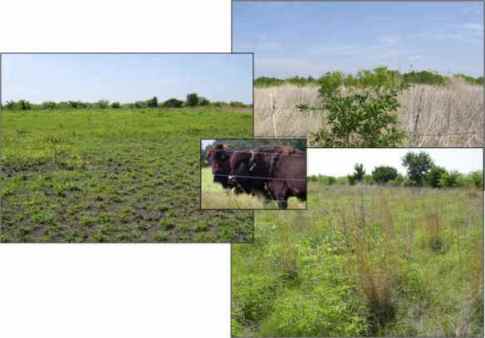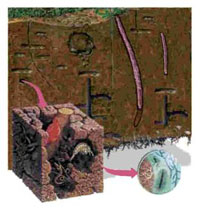 Funding:
Funding:
Dixon Water Foundation
Research collaborators:
Ken Steigman and Richard Freiheit, LLELA, University of North Texas, P.O. Box 310559, Denton TX 76203
Project Duration January 2007 through December 2011
Previous prairie restoration by Dr Steve Windhager from 1986 to 1998 in the Lake Lewisville Environmental Learning Area (LLELA) indicated that seeding of native prairie plants was required to establish them and that mowing or burning at establishment did not enhance plant establishment. A botanical analysis in December 2005 revealed that the botanical composition had not changed since 1998 while plants were left undisturbed. There is much published evidence that the disturbances of fire and grazing are necessary to maintain normal ecological functioning and development to dominance by native tallgrass prairie grasses. We believe that it would be instructive to examine the above and below ground responses to the disturbances of fire and grazing, independently and together, to determine if these disturbances would alter above or belowground plant and microbial function and development and speed up prairie restoration.
The general public often believes that grazing is detrimental to healthy rangelands based on observations of badly managed ranchland. The more sedentary and concentrated animal use of the vegetation under human management removes the key stabilizing element of periodic use. In addition, maintenance of artificially high animal numbers with supplementary feed during less productive periods further compounds degradation. Despite the negative impacts of grazing on range health, there are numerous instances where management of native rangeland with domestic livestock has resulted in excellent range condition and improvement. The challenge is to manage grazers in a manner that maintains or improves ecosystem structure and function in these ecosystems while achieving social and economic management goals.
We have introduced fire and periodic pulse grazing by bison as treatments in the expectation that they will progress this development where total resting has failed to do so. The goal of this project is to determine if burning and grazing, individually and together, will increase the establishment of herbaceous prairie plants to enhance the restoration of native prairie begun 10 years previously. We hypothesize that both fire and grazing, individually and together will restore dominance of high seral native tallgrass species where total resting has failed to do so. Soil microbes are important regulators of soil physical parameters influencing rainfall infiltration and the growth regulation of plants. Little research has been done in this environment detailing the response of soil microbes to fire, grazing and no disturbance. We will be monitoring soil microbe populations to gain an insight into how soil microbes respond to these disturbances and determine how they influence prairie plants.
A no-graze, no-burn control is being compared with grazing alone, burning alone and graze-plus-burn treatments. Grazing is being managed to allow the key native prairie tall grasses and forbs to dominate. We will measure plant species and soil microbial changes in response to these treatments. We also plan to measure soil infiltration and penetration resistance, soil bulk density, pH, cation exchange capacity (CEC), carbon to nitrogen ratio and a microbial description to further characterize the soil conditions at these times.
Building new topsoil:
The most meaningful indicator of a healthy ecosystem and the long-term health and well-being for a nation, is whether soil is being formed or lost. For soil to be formed it must be living and healthy. Healthy soil requires a groundcover of plants and plant litter that buffers temperatures, enhances infiltration and decreases evaporation so the soil remains moist for longer after precipitation. Soil structure is provided by gums and polysaccharides produced by soil microbes. These sticky substances glue together soil particles and minerals into small aggregates that are glued together into larger aggregates called peds. When soil is well aggregated, the pores (spaces) between the aggregates allow the soil to breathe and absorb moisture quickly when it rains. An ongoing supply of energy in the form of carbohydrates from actively growing plant roots and decomposing litter is required so soil organisms can flourish and maintain or build soil structure. Friable, porous topsoil makes it easier for plants roots to grow and for soil organisms to prosper, reinforcing the soil building process. Such soils retain moisture longer which enhances the microbial activity that determines nutrient availability for plants and reduces erosion.
Soil organic matter:
Soil carbon and nitrogen are key elements supporting ecosystem function and productivity. We are studying the short- and long-term effects of different grazing and brush management practices on these soil elements and soil structure.
Soil micro-fauna and flora:
The abundance and composition of soil microbes is an excellent indicator of soil health and function. We are characterizing soil  microfauna and microflora associated with different soil series, plant communities and management practices
microfauna and microflora associated with different soil series, plant communities and management practices
We will specifically examine:
1) If fire and grazing alone or combined will speed up tallgrass prairie restoration;
2) If soil microbial composition and biomass will reflect the composition of the plant community in each treatment; and
3) Whether key low, mid and high seral grasses will grow less in soil with a lower seral soil microbial population.